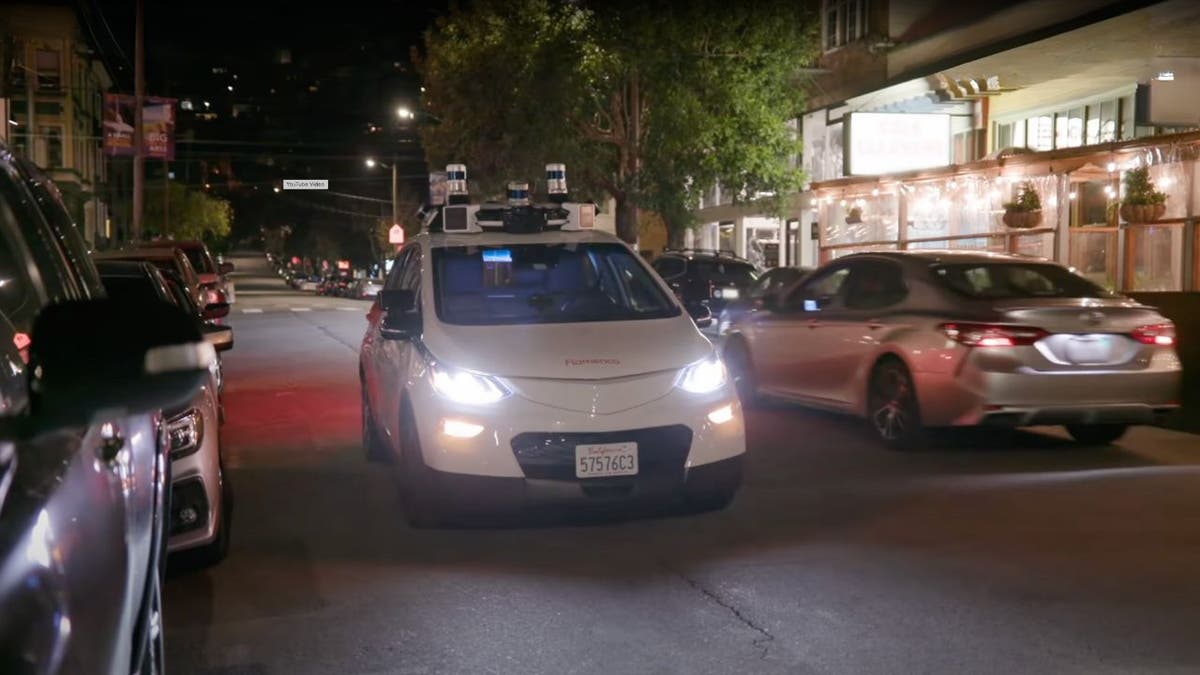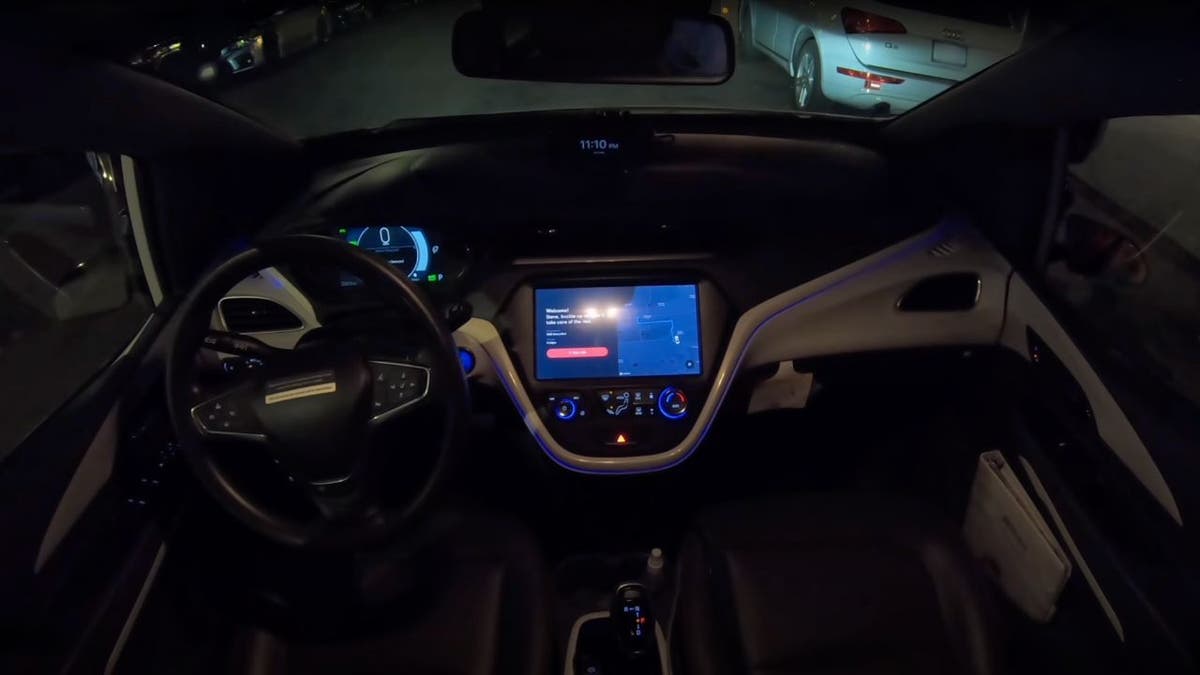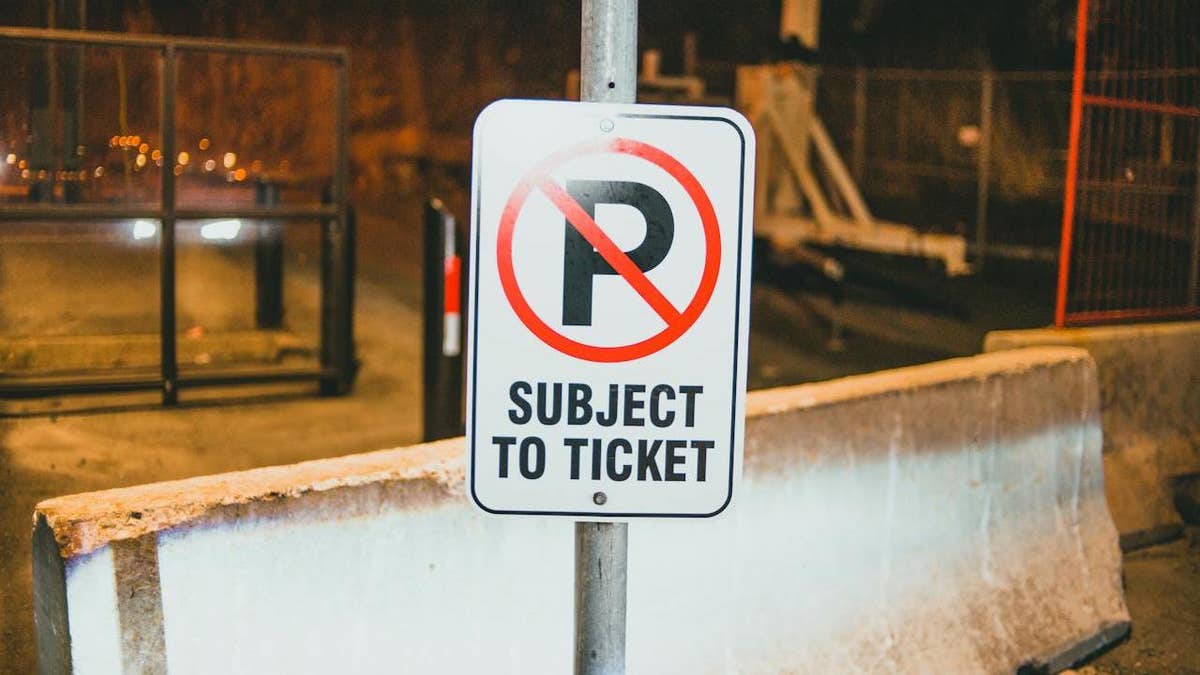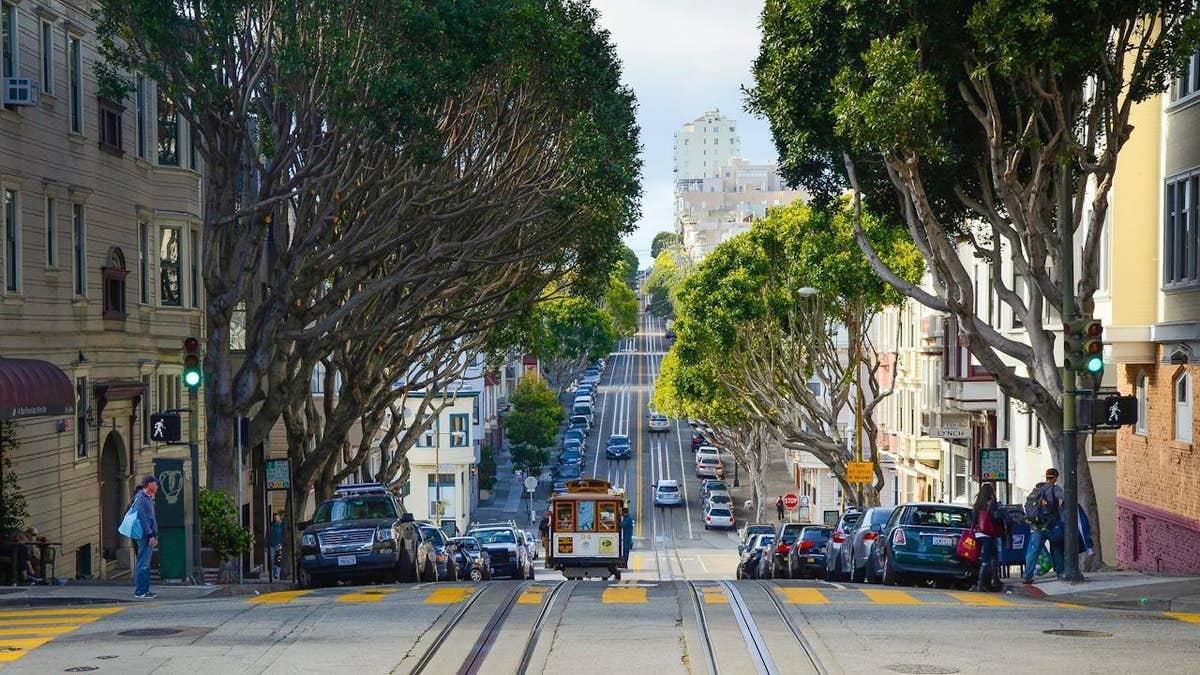The autonomous 'mega-mower' of the future
Kurt "CyberGuy" Knutsson introduces the lawnmower of the future by FireFly Automatix.
If it feels like technology is speeding ahead, you might be right. In some states, like California, the laws have yet to catch up with technology.
If ride-share drivers and rental scooters aren’t complicating the roadways enough already, now there are self-driving cars on the road and no one to hold them accountable.
With the ability to cause as much damage as a car with a driver, it would seem natural to assume that there would be the same level of consequence or recourse for self-driving cars.
Yet, unlike Arizona and Texas, the laws have not been changed in California.

Cruise AV (Kelley Blue Book)
How autonomous vehicles escape traffic tickets in the city by the bay
In San Francisco, autonomous vehicles (AV) have been allowed to operate without a driver within city limits since 2022. While AVs can be stopped by an officer like any other vehicle on the road, a citation cannot be written unless there is a driver or safety driver present overseeing the operation of the car.

Cruise AV (Kelley Blue Book)
MORE: FIRST HUMANOID ROBOT FACTORY IN THE U.S. CAN CRANK OUT 10,000 ROBOTS A YEAR
Technically, the registered owner of the AV can be cited for non-moving violations such as parking violations. Alarmingly, the registered owner of an AV cannot be cited for moving violations, such as blowing past a stop sign or driving down the wrong side of the street.

"Subject to ticket" sign (Kurt "Cyberguy" Knutsson)
MORE: CRIME-FIGHTING AI ROBOCOP IS KEEPING AN EYE ON NEW YORK’S SUBWAY RIDERS
Why California needs to catch up with other states on autonomous vehicle laws
While states like Arizona and Texas have updated their laws so that self-driving cars can get moving violation citations with or without a driver present, California has not. Because of this technicality, California has become the wild, wild west for AVs as self-driving cars do not face the same consequences for moving violations. This is especially troubling as one could argue that the potential damage moving violations can cause is usually greater than that from nonmoving violations.
Ironically, California has the largest market for robotaxis, which are AVs. There are over 500 AVs operating in San Francisco alone between Waymo and Cruise, and this is before the controversial vote allowing for their expansion. Compare that to Austin, Texas, where only 125 AVs are operating.

Street in San Francisco (Kurt "Cyberguy" Knutsson)
MORE: HOW THIS ROBOT HELPS YOU PROTECT AND CONNECT YOUR HOME
The urgent need for legal reform on autonomous vehicles in San Francisco
San Francisco locals and officials alike have been reporting the challenges of inhabiting a city teeming with AVs. From blocking emergency response teams to dragging a pedestrian under an AV, it is clear that something needs to change, legally.
GET FOX BUSINESS ON THE GO BY CLICKING HERE
While top robotaxis companies such as such as Cruise are taking a step back and pausing service after the widely publicized pedestrian dragging incident, it is clear that the law needs to speed up the technology.

Cruise AV on the street (Cruise)
What can be done to make autonomous vehicles safer and more accountable?
As technology advances, so should the laws that govern it. AVs are not just a novelty, they are a reality that affects the lives and safety of millions of people. San Francisco, as one of the leading cities for AV innovation, should also be a leader in AV regulation. There are several steps that can be taken to make AVs safer and more accountable in San Francisco.
Updating the laws to allow for moving violation citations for AVs, regardless of whether there is a driver present or not. This would create a deterrent for reckless or faulty AV behavior and ensure that the registered owners of AVs are held responsible for their actions.
WHAT IS ARTIFICIAL INTELLIGENCE (AI)?
Creating a clear and transparent system for reporting and investigating AV incidents, especially those involving injuries or fatalities. This would help to identify the causes and prevention of AV accidents and improve public trust and confidence in AV technology.
Establishing a minimum standard for AV safety and performance, such as requiring AVs to have sensors, cameras, and communication systems that can detect and avoid obstacles, pedestrians, and other vehicles. This would ensure that AVs are capable of operating safely and reliably in complex and dynamic urban environments.
Collaborating with AV companies, researchers, and stakeholders to develop best practices and guidelines for AV testing and deployment. This would foster a culture of innovation and cooperation among the AV industry and the public sector and ensure that AVs are aligned with the needs and values of the community.
Kurt’s key takeaways
AVs can change the way we travel, move, and live in San Francisco and beyond. But they also bring significant challenges and risks that need to be dealt with and controlled. By taking proactive and responsible steps to regulate autonomous vehicles, San Francisco can make sure that AVs are not only a technological wonder but also a social good.
CLICK HERE TO GET THE FOX NEWS APP
Are there AVs in your city yet? Who do you trust more to do the driving: humans or machines? Let us know by writing us at Cyberguy.com/Contact.
For more of my tech tips & security alerts, subscribe to my free CyberGuy Report Newsletter by heading to Cyberguy.com/Newsletter.
Ask Kurt a question or let us know what stories you'd like us to cover.
Answers to the most asked CyberGuy questions:
- What is the best way to protect your Mac, Windows, iPhone and Android devices from getting hacked?
- What is the best way to stay private, secure and anonymous while browsing the web?
- How can I get rid of robocalls with apps and data-removal services?
Copyright 2024 CyberGuy.com. All rights reserved.





















